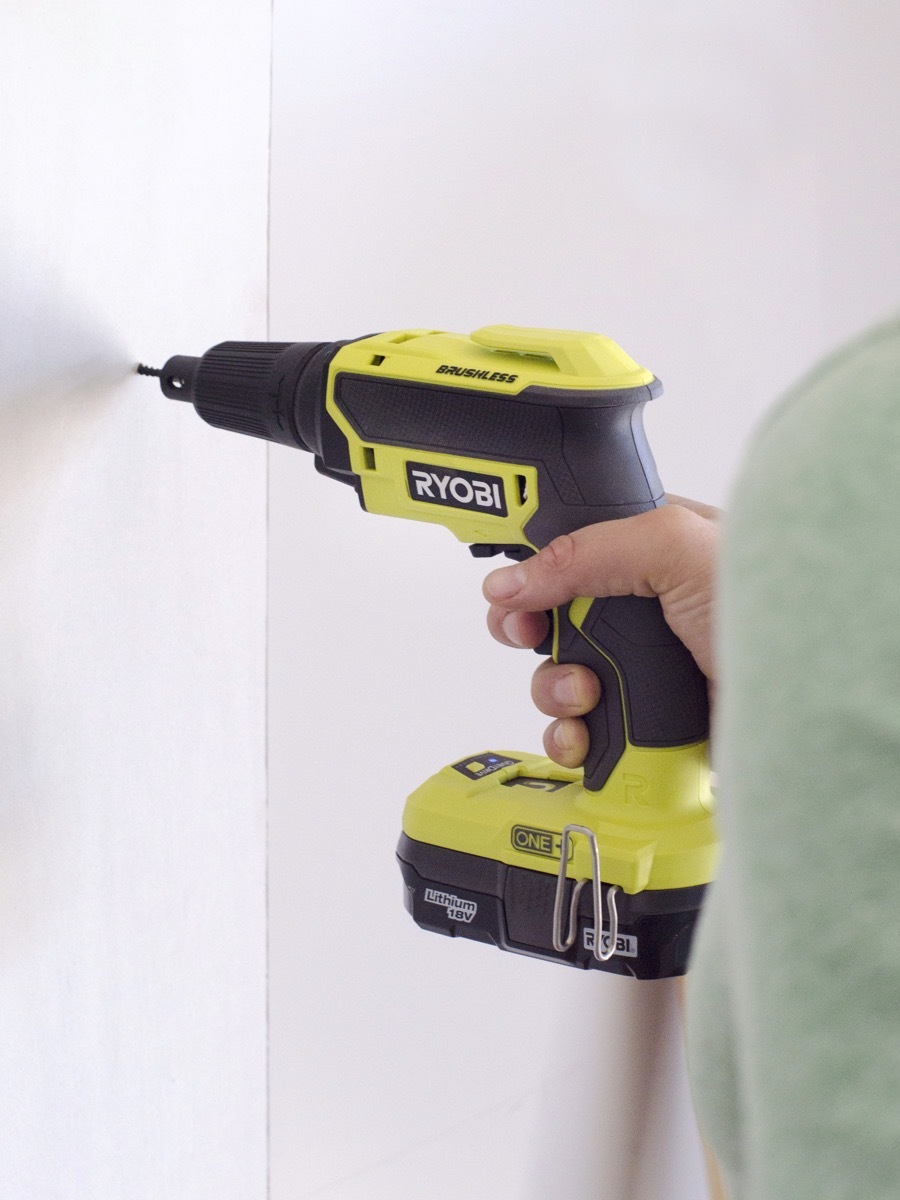The modern method of constructing an interior wall is kind of amazing, when you think about it. Drywall is gypsum plaster sandwiched between two layers of paper, and it’s what most of the walls you encounter every day are made out of. Drywall (often referred to by one of it’s brand names, Sheetrock), is incredible. It’s strong, it’s (relatively light), easy to cut to almost any shape or size, and easy to put up. It simplifies the process of building a wall.
Hanging drywall is definitely one of those DIY jobs I recommend everyone tackle at one point or another (mudding drywall is a different story). Hanging drywall yourself (with the proper tools), isn’t very hard, and can save you a bunch of money. But one thing’s for sure, you’ll go through a lot of screws. Like, thousands and thousands of screws. To drive those screws, you definitely want to use a drywall screw gun.
A screw gun is a very specialized version of the standard power drill. Unlike the drill, it’s meant to be used only for one thing: driving screws through drywall, into the wooden or metal studs that make up the wall’s structure.
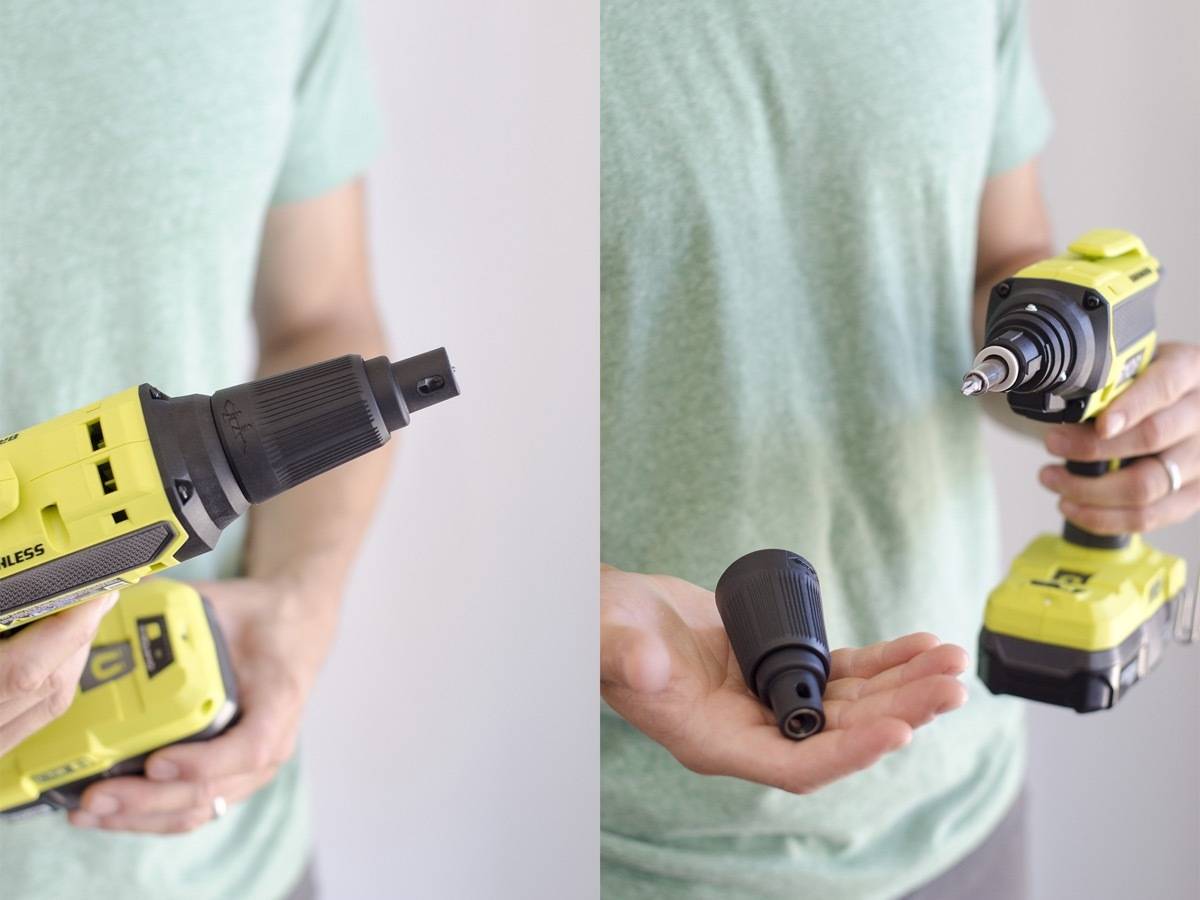
What makes a screw gun different?
A normal power drill has a variable speed trigger and a chuck, which allows you to put lots of different bits into the tool. A screw gun also has a variable speed trigger, but in addition, it has a clutch and a “nose cone”. The screw gun’s nose is what lets the drill automatically stop driving when the screw reaches the right depth. See, with drywall, it’s important to drive the screw to just the right depth: not too shallow (or it’ll show when the mud is applied), and not too deep, or it’ll tear the paper that gives the wall it’s lateral strength.
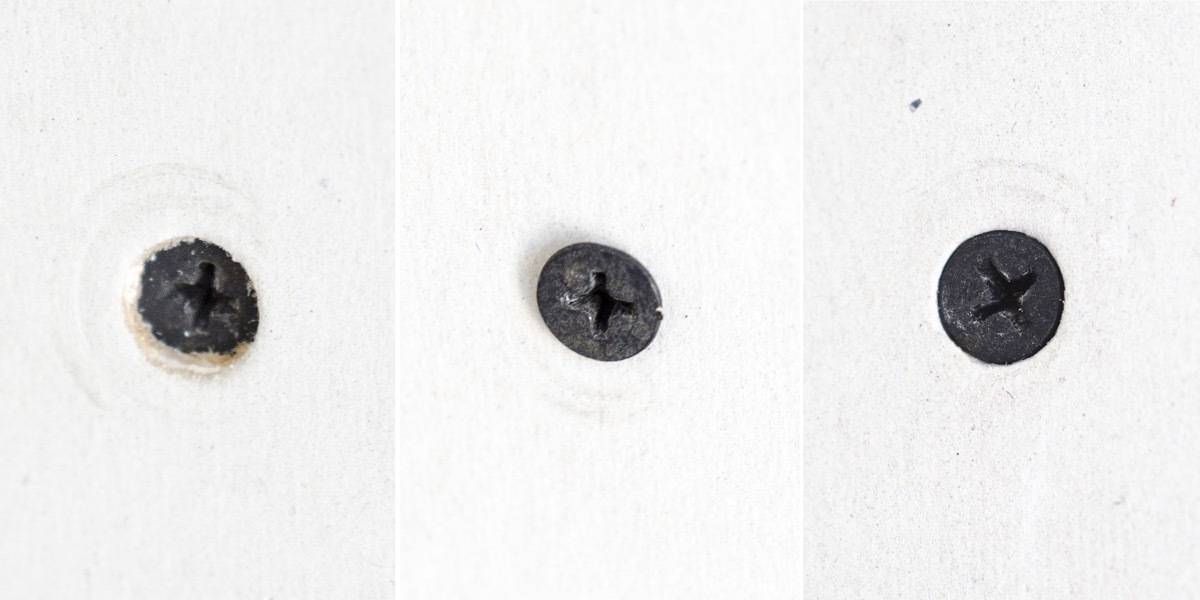
With a screw gun, you can use the nose cone to perfectly adjust the screw depth. As soon as the nose hits the drywall, the clutch is released, and the bit stops spinning. This makes hanging drywall a lot easier, and faster.
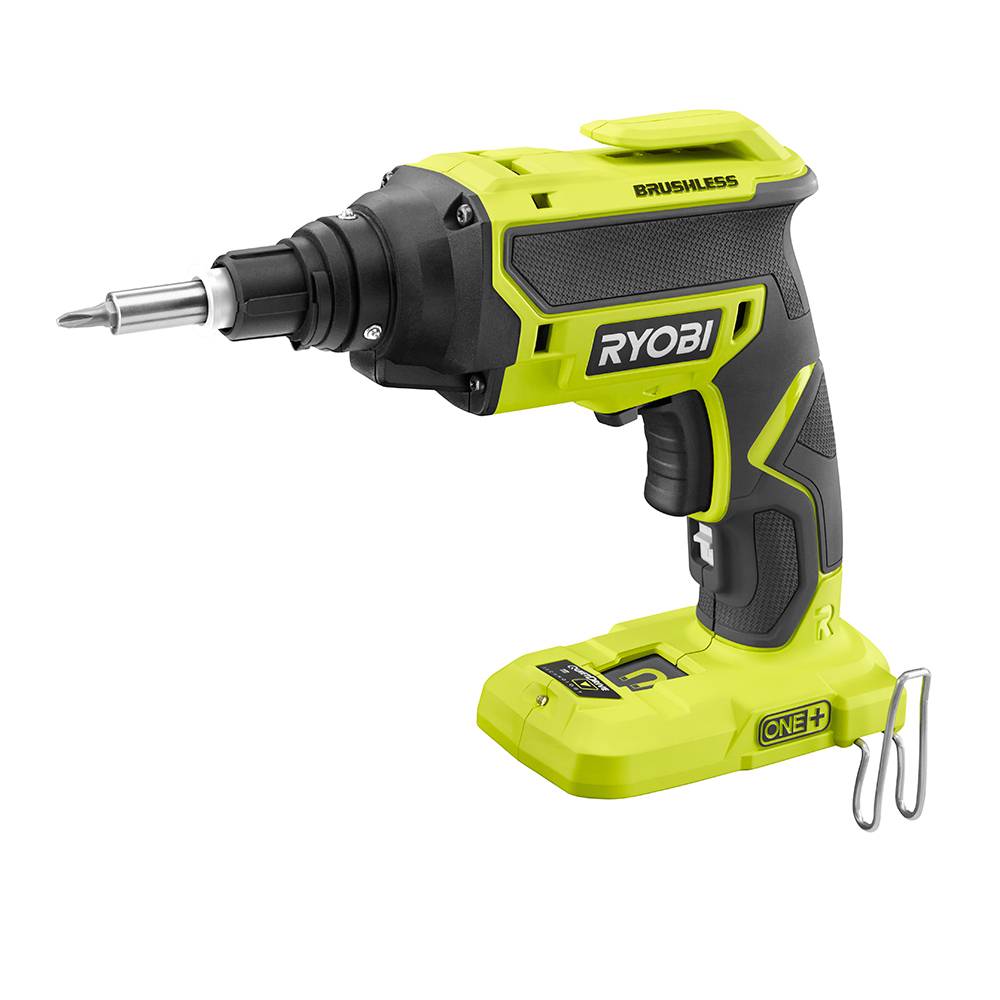
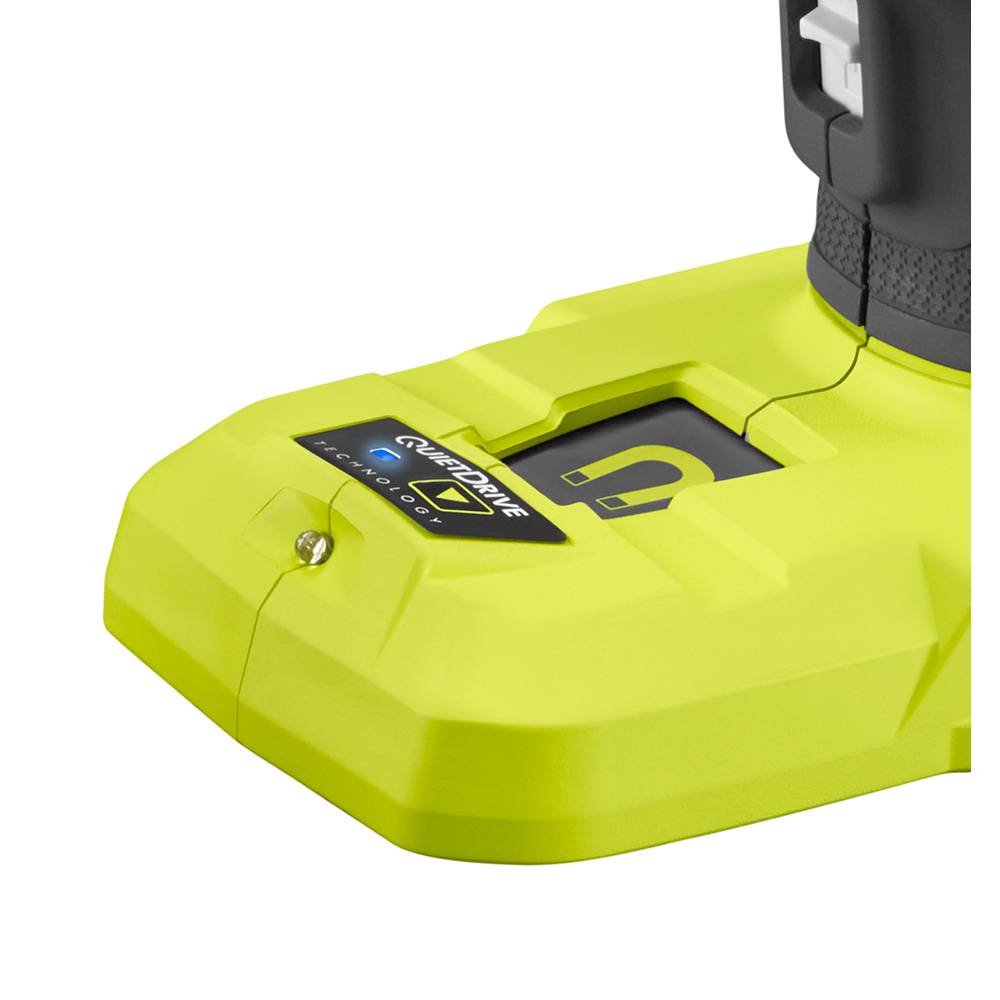
Hands on with a drywall screw gun
We got a chance to test out Ryobi’s 18V ONE+ Brushless Drywall Screw Gun this week, so we can show you exactly why a screw gun is so useful for putting up drywall.
First off: this tool is part of Ryobi’s ONE+ line, which means it works with every Ryobi battery in the universe. The brushless motor provides the performance and durability of a corded tool.
When you use a screw gun, you normally leave it locked in operating mode. This means the motor is spinning all the time; the Ryobi tool has a heavy duty clutch that engages when pressure is applied to the bit (and disengages when the screw reaches the correct depth).
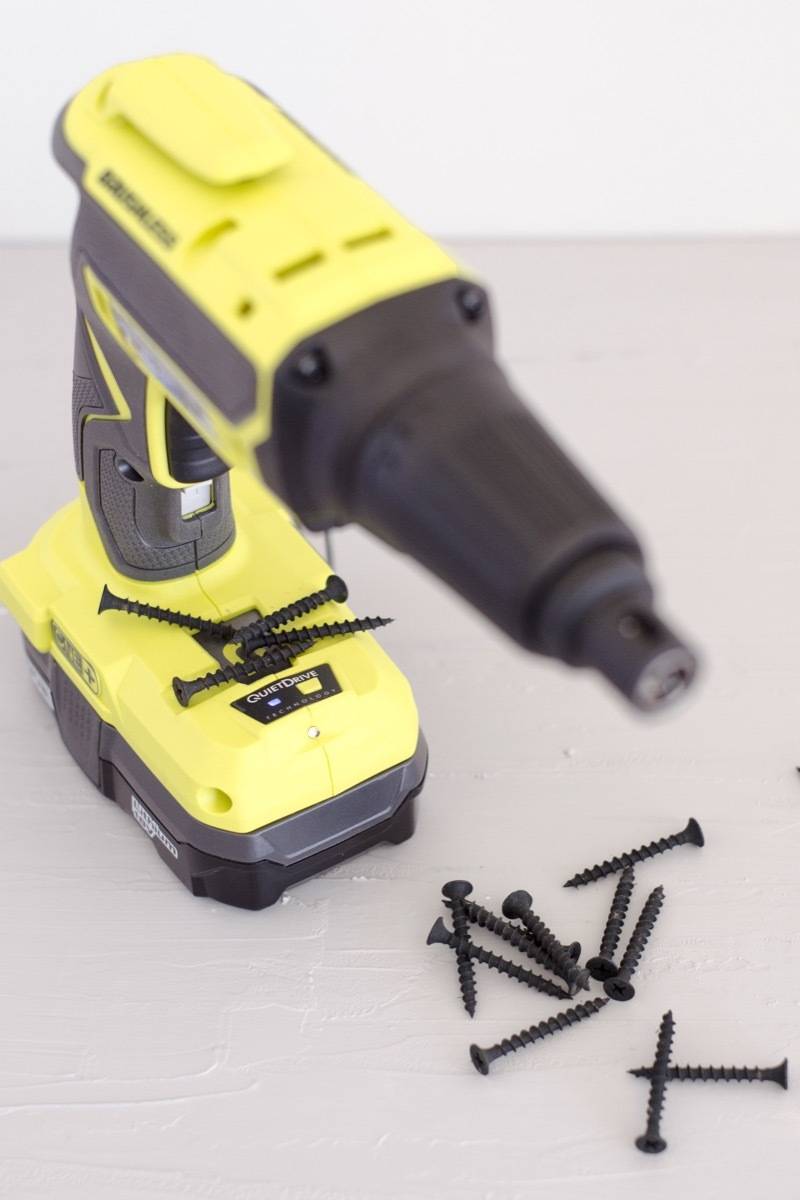
That means that hanging drywall is normally a very LOUD process. With a couple of screw guns running constantly, the noise can be overwhelming. This Ryobi tool addresses that with a feature called QuietDrive: it’s basically a little button you press on the tool’s base, that keeps the motor off until the moment when you start pushing the bit against the screw. Pretty cool!
Another important feature of any drywall gun is weight and comfort. This is a tool that you’ll be holding, lifting, putting down, picking up, and clipping to your belt for many hours at a time. It helps if it’s light and comfortable to hold. The Ryobi checks both of those boxes.
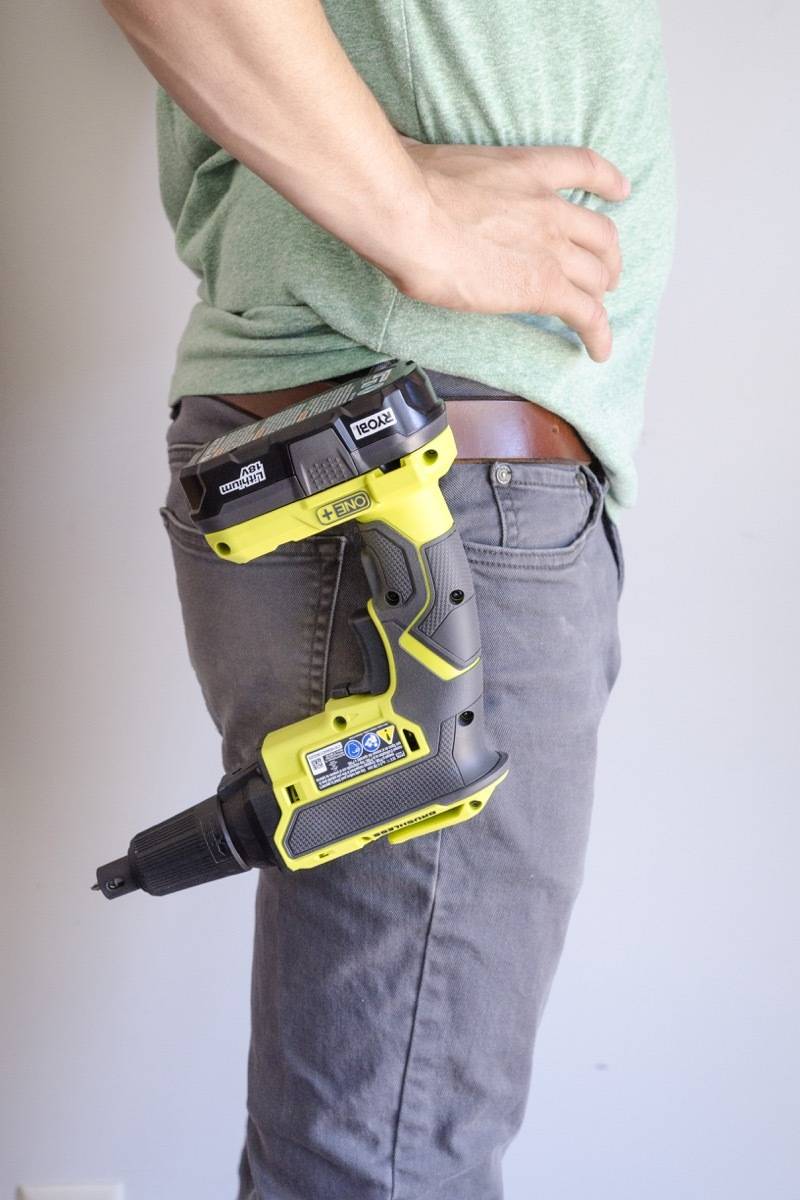
What other tools do I need for hanging drywall?
You can hang drywall without a gun (I’ve done it with an impact driver), it just takes more skill, and goes slower. Some other tools I’d recommend are:
A drywall lift (or jack): this simple tool uses mechanical advantage to help you move and position heavy sheets of drywall (especially useful when doing ceilings or tall walls).
A good toolbelt: you want something with plenty of space to hold screws (so you don’t have to head back to the screw bucket very often, as well as some loops to hang your tools from while you position the sheets.
Workboots: a twelve-foot sheet of drywall is heavy. When it falls on your toe (and it will, eventually), it’s best to be wearing some footwear that offers protection. Sneakers do not count.
Gloves: this one might be controversial, since a lot of people will say you can easily operate a screw gun with gloves on. But, if you can find a pair that give you some dexterity, I’d recommend it. Drywall screws leave little iron filing everywhere, and without gloves, these will end up all over your fingers. Ouch.
Safety glasses: dust, screws, iron filings … all of this stuff will be thrown around while you’re putting up drywall. Do you want any of those things in your eye?
A panel mover: a what-now?! Yeah, there are very specific tools for all kinds of funny things. A panel mover makes it easy for one person to grab and move a big sheet of drywall, without any assistance. It’s $10. Get one.
Drywall stilts. Ok, actually, you don’t need these. They’re just awesome and I wish I had some.
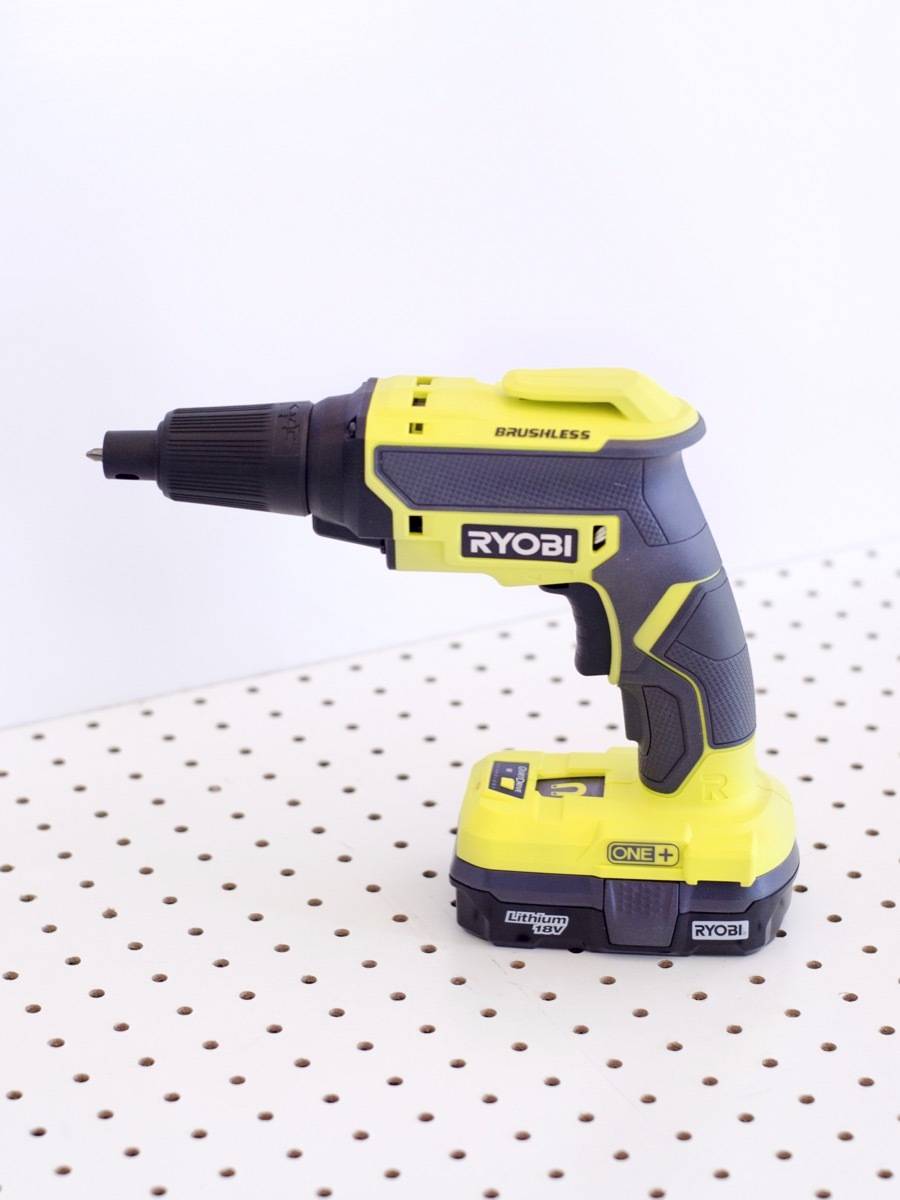
Have you done your share of drywall-ing? Never touched a sheet before? Let us know what you think!
This post is part of our tool school series!
This post is sponsored by The Home Depot. All opinions are mine alone. Thanks for reading, and for supporting the brands that make Curbly possible.
I acknowledge that The Home Depot is partnering with me to participate in the ProSpective 2018 Campaign. As a part of the Program, I am receiving compensation in the form of products and services, for the purpose of promoting The Home Depot. All expressed opinions and experiences are my own words. My post complies with the Word Of Mouth Marketing Association (WOMMA) Ethics Code and applicable Federal Trade Commission guidelines.
